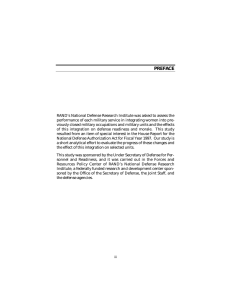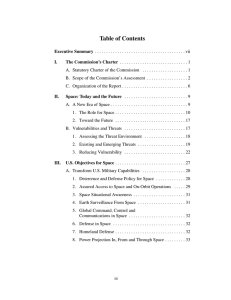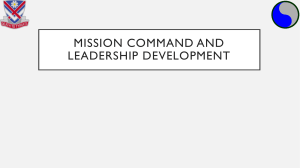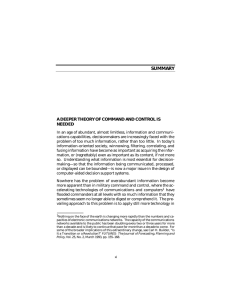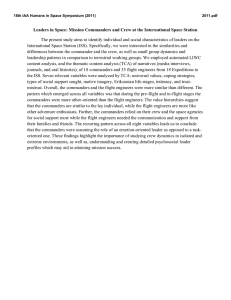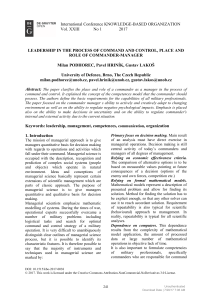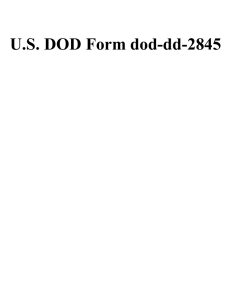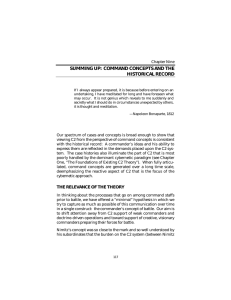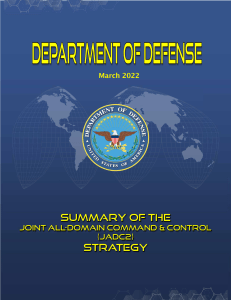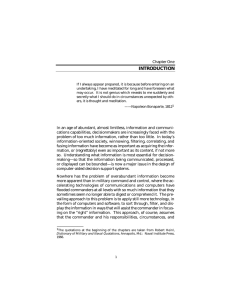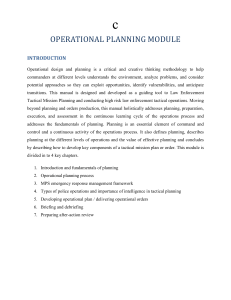PREFACE
advertisement
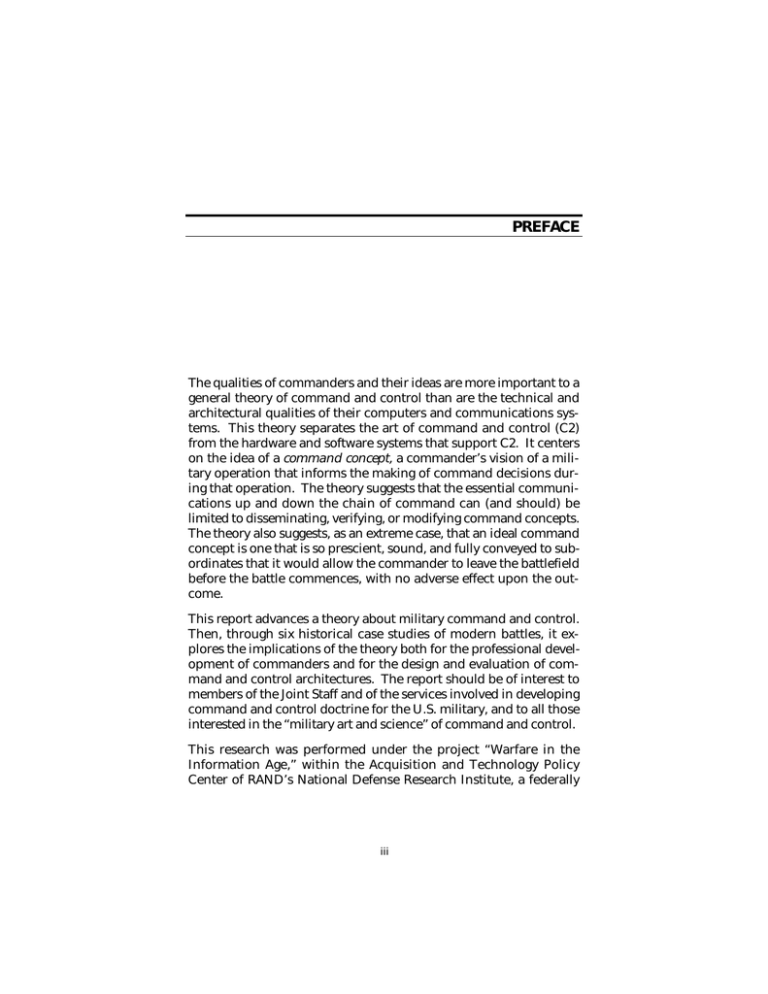
PREFACE The qualities of commanders and their ideas are more important to a general theory of command and control than are the technical and architectural qualities of their computers and communications systems. This theory separates the art of command and control (C2) from the hardware and software systems that support C2. It centers on the idea of a command concept, a commander’s vision of a military operation that informs the making of command decisions during that operation. The theory suggests that the essential communications up and down the chain of command can (and should) be limited to disseminating, verifying, or modifying command concepts. The theory also suggests, as an extreme case, that an ideal command concept is one that is so prescient, sound, and fully conveyed to subordinates that it would allow the commander to leave the battlefield before the battle commences, with no adverse effect upon the outcome. This report advances a theory about military command and control. Then, through six historical case studies of modern battles, it explores the implications of the theory both for the professional development of commanders and for the design and evaluation of command and control architectures. The report should be of interest to members of the Joint Staff and of the services involved in developing command and control doctrine for the U.S. military, and to all those interested in the “military art and science” of command and control. This research was performed under the project “Warfare in the Information Age,” within the Acquisition and Technology Policy Center of RAND’s National Defense Research Institute, a federally iii iv Command Concepts funded research and development center sponsored by the Office of the Secretary of Defense, the Joint Staff, the unified commands, and the defense agencies.
